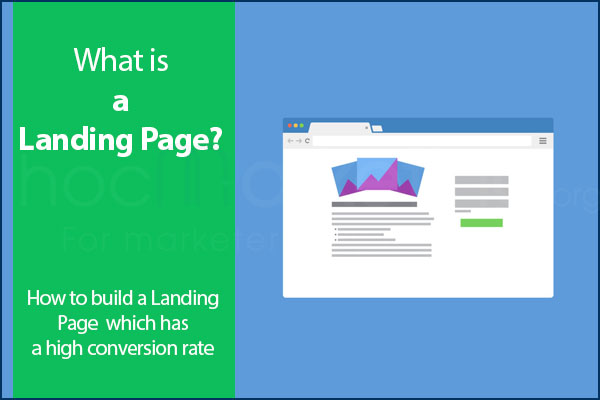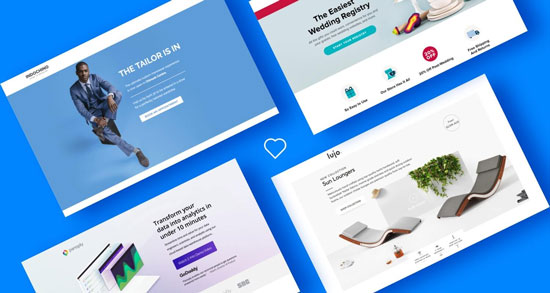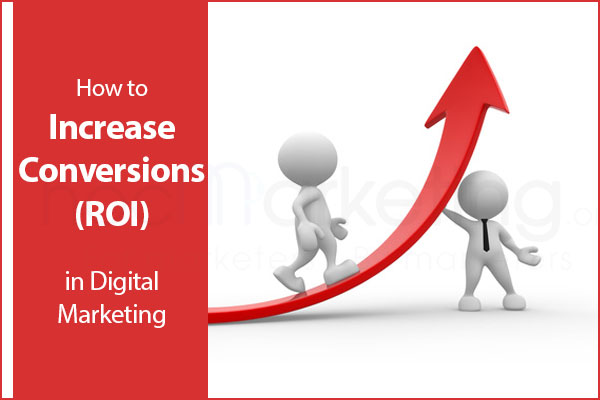
What is a Landing Page? How to build a Landing Page which has a high conversion rate

Are you tired of spending countless hours and resources on your marketing campaigns only to see minimal results? One key component that may be missing from your strategy is a landing page. A landing page is a standalone webpage designed to capture a visitor's information in exchange for a specific offer or action.
Are you tired of spending countless hours and resources on your marketing campaigns only to see minimal results? One key component that may be missing from your strategy is a landing page. A landing page is a standalone webpage designed to capture a visitor's information in exchange for a specific offer or action. In this blog post, we will explore the definition and purpose of a landing page, its role in a marketing campaign, the step-by-step process of building one, and the essential elements required for a landing page with a high conversion rate. So, let's dive in and learn how to create a landing page that can take your marketing efforts to the next level.
What is a Landing Page?
A landing page is a web page specifically designed to convert visitors into leads or customers. It is the first page that a visitor sees after clicking on an advertisement, social media post, or email link. The main objective of a landing page is to guide the visitor towards taking a specific action. This action could be signing up for a newsletter, downloading an e-book, registering for a webinar, or making a purchase.
Landing pages are a critical component of any marketing campaign because they help to increase the conversion rate of visitors into leads or customers. They are designed to be simple, clear, and focused on a single objective. Unlike a website or a blog, a landing page has no navigation menu or distractions that may lead the visitor away from the primary call to action.
A good landing page should be visually appealing, easy to navigate, and optimized for search engines. It should also have a clear and compelling headline, persuasive copy, relevant images or videos, and a prominent call to action. The success of a landing page is measured by its conversion rate, which is the percentage of visitors who take the desired action.
In summary, a landing page is a powerful tool for driving conversions and maximizing the return on investment of your marketing campaigns. By understanding what a landing page is and how it works, you can create effective landing pages that convert visitors into leads or customers.
Role of Landing Page(s) in a Marketing Campaign
Landing pages play a crucial role in any successful marketing campaign. They are designed to capture the attention of potential customers and guide them towards taking a specific action, such as making a purchase, filling out a form, or signing up for a newsletter.
One of the primary benefits of using landing pages is that they allow you to target specific audiences with a tailored message. By creating landing pages that are specific to each campaign or audience segment, you can increase the relevance of your message and improve your chances of converting visitors into customers.
In addition to targeting specific audiences, landing pages can also be used to test and optimize different elements of your marketing campaigns. By tracking the performance of different landing pages and making changes based on the data, you can continually improve the effectiveness of your campaigns and drive better results.
Finally, landing pages are also an excellent way to measure the success of your marketing campaigns. By tracking key metrics such as conversion rates, click-through rates, and bounce rates, you can quickly identify areas that need improvement and adjust your strategy accordingly.
In conclusion, landing pages are a critical component of any successful marketing campaign. They allow you to target specific audiences, test and optimize your campaigns, and measure your results, making them an essential tool for any marketer looking to drive better results and improve their ROI.
Step to build a Landing Page
Building a high-converting landing page requires a strategic approach. Follow these steps to create an effective landing page:
Step 1: Define Your Goal
Before you begin designing your landing page, it's essential to define your goal. Are you trying to capture leads, sell a product, or promote a new service? Once you know your goal, you can create a landing page that aligns with your objective.
Step 2: Identify Your Target Audience
Knowing your target audience is crucial in creating a landing page that resonates with them. Consider their demographics, pain points, and aspirations. Use this information to craft a message that speaks directly to them.
Step 3: Craft a Compelling Headline
Your headline should be attention-grabbing and clearly communicate the value of your offer. Use action-oriented language and keep it concise.
Step 4: Create a Strong Call-to-Action (CTA)
Your CTA should be prominently displayed and clearly communicate what action you want visitors to take. Use action-oriented language and create a sense of urgency.
Step 5: Design a Simple and Clean Layout
Your landing page should be visually appealing and easy to navigate. Use a simple layout with plenty of white space to draw attention to your offer.
Step 6: Use High-Quality Images and Videos
Images and videos can help convey your message and increase the visual appeal of your landing page. Use high-quality visuals that are relevant to your offer.
Step 7: Optimize Your Landing Page for SEO
Optimizing your landing page for SEO can help increase its visibility in search engine results. Use relevant keywords in your headline, body copy, and meta description.
By following these steps, you can create a landing page that engages your target audience and drives conversions.
Requirements for a Landing Page which has a high conversion rate
When it comes to building a landing page, the ultimate goal is to achieve a high conversion rate. This means that visitors who land on your page should be compelled to take the desired action, whether it is making a purchase, filling out a form, or subscribing to your newsletter. To achieve this, there are several requirements that your landing page must meet:
Clear and concise messaging
Your landing page should be laser-focused on the main message you want to convey to your visitors. Avoid clutter, jargon, or unnecessary details that can distract or confuse visitors. Use a clear and concise headline that sums up the value proposition of your offer, and follow it up with a persuasive subheading that highlights the benefits of taking the desired action.
Compelling visuals
Humans are visual creatures, and your landing page should leverage this fact by using high-quality images, videos, or graphics that enhance the message and emotion of your offer. Use visuals that are relevant to your target audience and that align with the tone and style of your brand.
Strong call-to-action
Your landing page should have a prominent and visually appealing call-to-action (CTA) button that clearly states what action you want visitors to take. Use action-oriented verbs such as "Get started," "Join now," or "Download" to make the CTA more compelling. Also, make sure that the CTA stands out from the rest of the page design and that it is placed in a strategic location, such as above the fold or at the end of the page.
Minimal form fields
If your landing page requires visitors to fill out a form, make sure that it asks for only the essential information that you need to follow up with them. The more form fields you have, the higher the chance that visitors will abandon the page without taking the desired action. Ideally, limit the form fields to three or four, and make them easy to fill out by using dropdown menus, checkboxes, or radio buttons.
Social proof and trust signals
Visitors are more likely to take action if they trust your brand and feel reassured that others have had a positive experience with your offer. Use social proof elements such as customer testimonials, star ratings, or logos of reputable brands that have endorsed your product or service. Also, use trust signals such as security badges, privacy policies, or money-back guarantees to mitigate any concerns that visitors may have about sharing their personal information or making a purchase.
By meeting these requirements, you can increase the chances of your landing page achieving a high conversion rate and generating more leads, sales, or sign-ups for your business. Remember to test and optimize your landing page regularly by using A/B testing, heat maps, or user feedback to identify what works best for your target audience.
Summary
In conclusion, a high-converting landing page can make a huge difference in the success of your marketing campaign. By creating a focused and persuasive page that clearly communicates your value proposition and makes it easy for visitors to take action, you can drive more leads, sales, and revenue. Remember to follow the steps outlined in this post, including defining your goal, audience, and message, creating a compelling offer, designing a clear and visually appealing layout, optimizing for mobile, and testing and refining your page over time. With these best practices in mind, you can build landing pages that convert like crazy and help you achieve your business goals.










